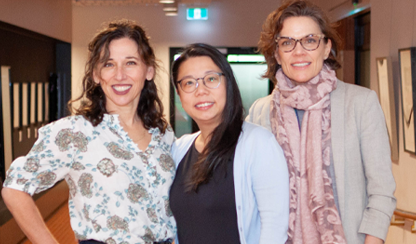05 March 2020
Institute news
In the lead up to International Women’s Day on Sunday, we want to shine a light on one of our fabulous postdoctoral researchers, Dr Rachel Climie. She is studying vascular ageing to help us understand what our large arteries can tell us about our risk of heart disease beyond the common risk factors.
 Rachel is interested in the decline in vascular structure and function, the consequences of early vascular ageing (such as in patients with diabetes or cancer) and how exercise can be used to prevent or delay this.
Rachel is interested in the decline in vascular structure and function, the consequences of early vascular ageing (such as in patients with diabetes or cancer) and how exercise can be used to prevent or delay this.
While age-dependent arterial damage typically appears in the fifth or sixth decade of life, there is wide variability between individuals with some displaying early vascular ageing. Exposure to environmental and genetic factors as early as during childhood or even during foetal life promotes the development and accumulation of subclinical vascular changes that directs an individual towards a trajectory of early vascular ageing. This has led to the concept that vascular age, as opposed to chronological age, may be better related to the prognosis of heart disease.
Rachel will shortly undertake a study looking at vascular ageing in 100,000 children, adolescents and young adults to understand what factors contribute to accelerated vascular ageing in early life. Understanding this may be critical for clinicians in preventing the development of cardiovascular disease later in life.
Rachel recently returned from Paris where she was studying cardiovascular epidemiology and arterial mechanics at Paris Research Centre Cardiovasculaire.
She is part of a European collaborative team awarded $1 million to translate vascular ageing research into clinical practice.
Rachel is also a wonderful advocate in helping to raise awareness of cardiovascular disease as the country’s biggest killer and the importance of medical research to tackle this through her involvement in groups such as the High Blood Pressure Council of Australia and the Australian Cardiovascular Alliance.





